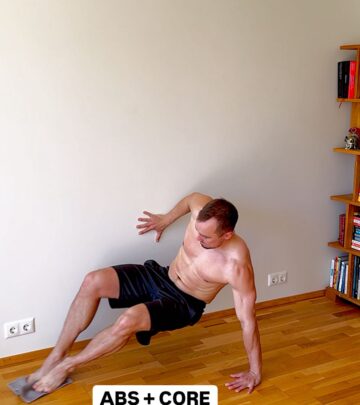Train The Trunk For Smart, Injury-Free Fast Bowling
Enhancing fast bowling by retooling trunk posture ensures smarter, safer delivery always!

Image: Instagram
In the world of fast bowling, one common myth is being debunked by experts like Steffan Jones. Instead of fixating on the traditional 12 o’clock arm release, coaches and trainers are urging a refocus on trunk mechanics. A recent discussion from PaceLab challenges the long-held belief that the arm slot is the fixed key to speed and power. Instead, they reveal that it’s the trunk—the posture, the lateral flexion, and the alignment—that plays the decisive role in injury prevention and performance gains.
The Real Issue: Trunk Mechanics Over Arm Slot
The key insight is that two bowlers may exhibit nearly identical arm positions, but subtle differences in trunk orientation can make a world of difference. For instance, an upright trunk paired with an over-the-top arm slot creates a very different risk profile than a bowler whose trunk tilts naturally to complement a sidearm delivery. Research cited by PaceLab shows that lateral trunk flexion beyond 40° during fast bowling significantly increases lumbar spine loading, particularly when combined with trunk rotation. This extra load is a known precursor to lumbar stress fractures—a common injury among young fast bowlers learning the trade.
In a detailed breakdown, the post stated: “Trying to manufacture a vertical arm without shoulder or thoracic mobility? The body will find a way—usually by collapsing the spine or delaying trunk rotation. That’s where the damage is done.” This explanation emphasizes that coaching should not merely aim to ‘fix’ the arm slot. Instead, the true aim should be to train the trunk, from the moment of foot contact until delivery, ensuring the entire kinetic chain works in unison to produce speed safely.
Pacelab’s System: Building From The Ground Up
Steffan Jones, a prominent figure in cricket coaching and biomechanics, advocates for a holistic approach. Under the PaceLab system, the focus is squarely on trunk training. Rather than enforcing a rigid arm position, the system develops an athlete’s entire posture—from pelvic rotation to trunk alignment. As explained in a PaceLab caption, “We don’t teach arm slot. We train the trunk.” This methodology not only builds consistency in the delivery but also minimizes the risk of injury by addressing misalignments that come with forced compensations.
The traditional notion of chasing the idealized technical shape is now being replaced by a smarter understanding of biomechanics. Another related PaceLab post highlighted that speed is a system; it’s about how the runner’s momentum, trunk stability, and arm mechanics together influence the final ball speed. In one case study shared on Instagram, even when traditional cues like a perfectly straight front leg were compromised, a bowler could still see a 6 kph increase in ball speed by optimizing his run-up and trunk performance.
Scientific Underpinnings: Davis And Wolff’s Laws
Diving deeper, the approach is grounded in fundamental biomechanical principles. Davis’s Law and Wolff’s Law—cornerstones in sports science—explain how tissue and bone adapt to the stresses placed upon them. By strategically overloading the trunk and optimizing its movement patterns, the body is conditioned to handle the precise forces encountered during fast bowling. This not only improves performance but also reduces the likelihood of chronic injuries.
These principles stress that training should be contextual. As one PaceLab coach explained in an earlier Instagram post, the emphasis must be on “repetition without repetition.” That is, drilling mechanics under different conditions so that the bowler learns to adapt rather than simply mimicking a textbook motion. The idea is to build a robust, adaptable system rather than a rigid, error-prone template.
Changes In Coaching Philosophy
This new approach is resonating widely, especially among coaches who have witnessed high injury rates associated with outdated training models. Steffan Jones and his colleagues are shifting the focus from cosmetic adjustments like a ‘perfect arm slot’ to substantive training that adapts the whole body. Such a paradigm shift comes at a crucial time in cricket, where injury prevention is as important as athletic performance.
The modern training regimen involves a mix of high-intensity drills and lower-intensity skill consolidation sessions. Coaches utilize constraints-led approaches (CLA) that intentionally vary the conditions under which bowlers practice, forcing them to discover the most efficient and safe movement patterns organically. This method builds resilience and adaptability, ensuring that when fatigue sets in during a match, a bowler’s technique remains stable.
A recent Instagram update by PaceLab illustrated a drill-based session designed to reinforce technical attractors without overstressing the system. The session, which rotated bowlers through different lanes focusing on posture, power, precision, and speed, encapsulated the philosophy that true speed comes from an integrated, whole-body approach.
Steffan Jones, known for his clear and engaging analysis in the cricket community, is a key proponent of these innovations. His insights are further supported by biomechanical research and real-world practice sessions shared across social media. By promoting trunk training, he is not only redefining fast bowling mechanics but also contributing to a safer, more efficient way to develop raw pace.
Through these evolving training paradigms, the message is clear: bowl smart, not hard. The advancement in understanding and coaching methodology is poised to transform fast bowling as athletes learn that true performance and safety start from within—the trunk.
This shift in perspective offers promising potential to reduce the long-term toll of back and spinal injuries among young fast bowlers, setting up the next generation of cricketers for prolonged, successful careers.
Read full bio of Joyce














